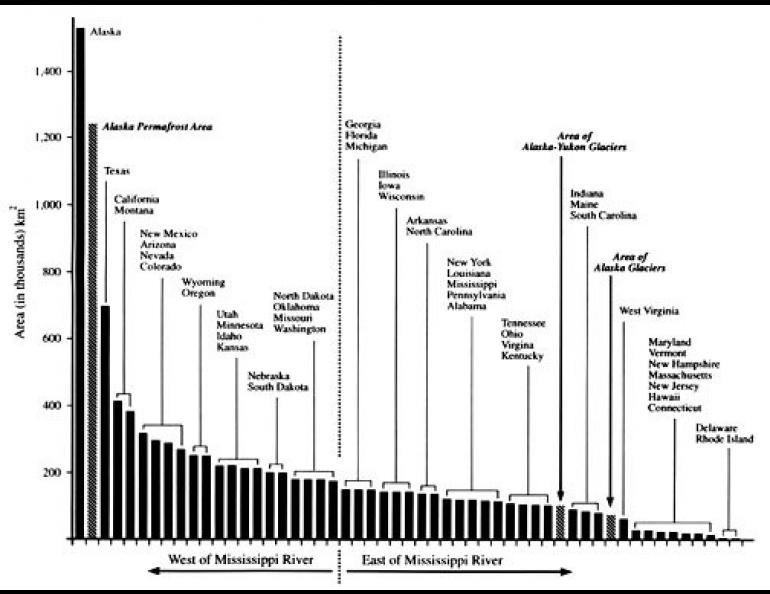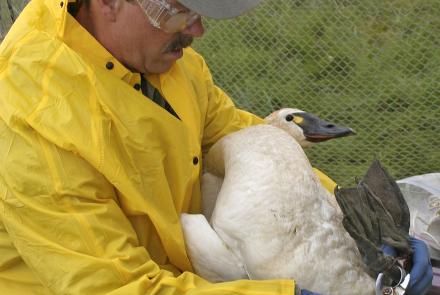
Alaska's Size in Perspective
Alaska is more than twice the size of the largest of the lower 48 states, and the amount of Alaska underlain by permafrost is equal to the size of three Californias. Ten states are smaller than the area covered by glaciers in Alaska. If glaciers of the adjacent Yukon Territory and British Columbia that connect to Alaska's ice fields (often referred to as the Alaska-Yukon glaciers) are added, thirteen states are smaller than the area covered by glaciers.
The area of Alaska owned by private individuals and Native corporations is about the same size as the area of Michigan; 27 states are smaller than that. Much of Alaska is owned and managed by the federal government, which purchased Alaska from Russia in 1867 for $4.74 per square kilometer.
The U.S. Forest Service manages an area in Alaska about the size of South Carolina and Alaska has more national parks and preserves than all the other states combined. Alaska's national parks and preserves cover an area about the size of Kansas. The area managed by the U.S Fish and Wildlife Service is slightly larger than Arizona, and the Alaska state government and the U.S. Bureau of Land Management (BLM) both have chunks of land about the size of New Mexico.
Alaska's volcanoes along the Alaska Peninsula and the Aleutian Islands stretch roughly the distance from Tulsa, Oklahoma, to San Francisco. This does not count those in the Wrangell Mountains and on the west side of Cook Inlet. Forty three of Alaska's volcanoes have erupted since 1767, when people started keeping written records.
Alaska's treeless North Slope, the area north of the Brooks Range, has average annual temperatures in the range of 10 degrees Celsius below zero and continuous permafrost up to 600 meters thick. The area of the North Slope is about 200,000 square kilometers, roughly the size of Nebraska. Alaska's 19,000 square kilometers of lakes occupy more space than all of the Hawaiian Islands.
Because most of Alaska lies north of 60°N, altitudes in excess of 2000 meters above sea level (about 6500 feet) are fairly inhospitable. Alaska has about 34,000 square kilometers above this altitude, a chunk of land larger than Maryland. Nine states have smaller areas than this high-altitude part of Alaska.
Alaska's enormous size carries enormous responsibilities for the state government. Alaska sprawls across four time zones (even though three of these have been politically combined into one). It covers 57.5 degrees of longitude, which equals the span of land from Maine to Washington. North to south, Alaska extends through 20 degrees of latitude, from 51 to 71 degrees, which equals the span of land from a latitude south of London, England, to within nineteen degrees of the North Pole. In addition, the coastline of Alaska exceeds the combined coastlines of all the other states in the U.S., including Hawaii.
Most Alaskan villages are reached only by air or water transportation. To maintain government infrastructure through such a vast region is a major challenge for any state government.
Incidentally, the $4.74 per square kilometer paid by the U.S. to Russia is by far the best bargain of any land purchase deal in U.S. history; the Louisiana Purchase from France in 1803 was 1.4 times larger in area, and cost $7.00 per square kilometer. All the other purchases were far more expensive than these massive acquisitions.





